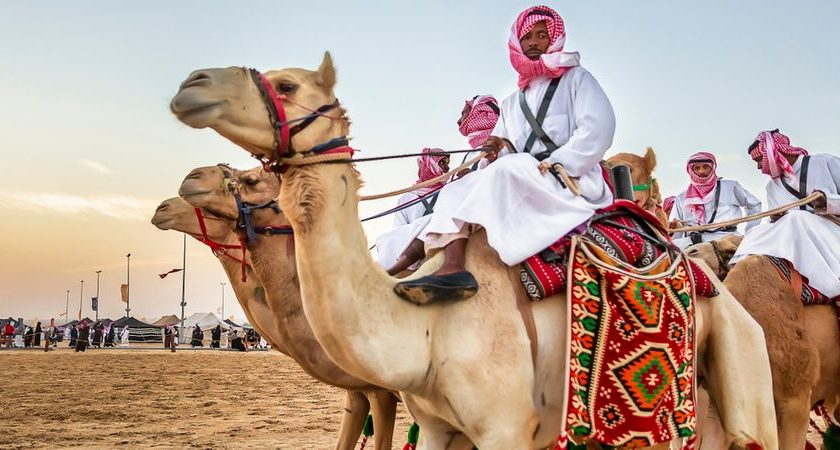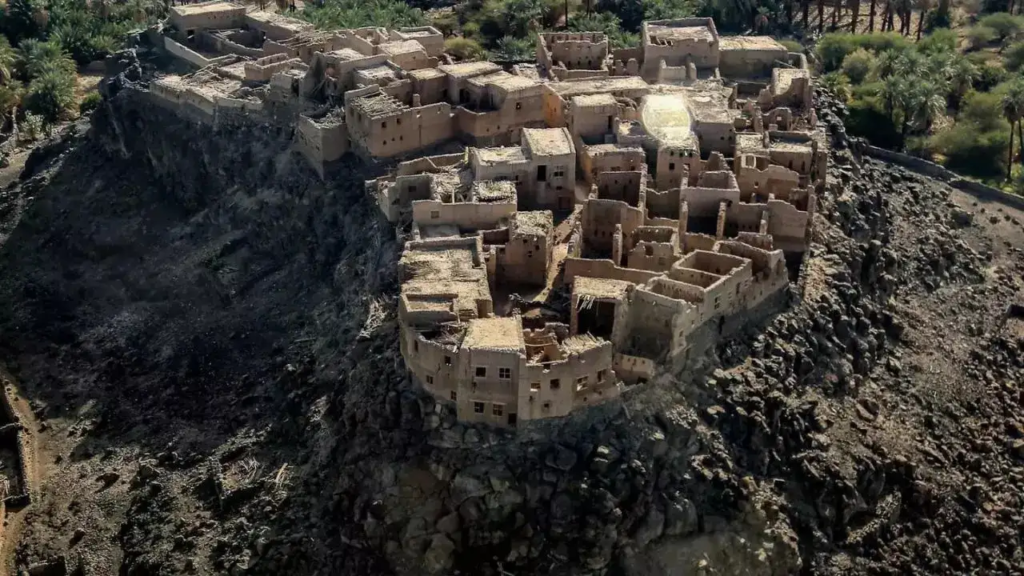Evolution of Lifestyle in Saudi Arabia is a journey that reflects centuries of transformation—from the wide deserts roamed by Bedouin tribes to the modern cities of Riyadh and Jeddah filled with skyscrapers, malls, and digital life. This shift from a traditional nomadic lifestyle to urban living has reshaped culture, family, work, and identity in the Kingdom.
This article explores how this transformation took place, what drove it, and how it continues to impact Saudi society today.
1. From Tents to Towers: A Radical Housing Shift

Before the discovery of oil, most people in Saudi Arabia lived as nomads, constantly moving across the desert with camels, tents, and minimal possessions. Homes were temporary, simple, and built to survive the harsh desert climate.
Today, Saudi Arabia boasts some of the most advanced urban development projects in the world, such as NEOM and The Line. Families now live in well-planned apartments, villas, and gated communities equipped with modern amenities. This shift has changed not just the physical environment, but also the concept of family space and privacy.
2. Tribal Connections to Global Communities
Traditionally, social life in Saudi Arabia was centered around tribes and extended families. Every tribe had a strong identity, traditions, and a deep connection to their ancestors. Communication and community were built through physical gatherings and tribal councils.
Urbanization has redefined this social fabric. Today’s youth often connect through social media more than tribal events. International influence, education, and global exposure have created a more diverse, digital, and global mindset. However, tribal pride and traditions are still respected and preserved.
3. Livelihoods: From Herding to High-Tech
The evolution of lifestyle in Saudi Arabia is also seen in how people earn their living. In the past, the economy depended on livestock herding, small-scale agriculture, and trade along desert routes.
After oil was discovered in the 1930s, the country’s economy shifted rapidly. Jobs in oil, construction, education, and technology replaced older ways of life. Today, initiatives like Vision 2030 aim to reduce oil dependence, promoting careers in tourism, tech, and entrepreneurship. This has created new opportunities and raised the standard of living.
4. Transportation: Camels to Cars
Transportation was once slow, limited, and heavily reliant on animals. Camels were essential for trade, travel, and survival in desert life.
Today, Saudi Arabia has world-class roads, metros, and airports. Cities like Riyadh and Makkah have efficient public transportation systems. Most families now own cars, and the country is even moving toward electric vehicles and smart transport solutions. This ease of travel has played a major role in the urban lifestyle.
5. Education and Women’s Role in Society
In traditional Saudi society, education—especially for women—was limited. Knowledge was passed through oral traditions or basic religious schooling.
In the urban Saudi Arabia of today, education is a priority. Schools, universities, and research institutions are accessible nationwide. Women, once largely confined to homes, are now university graduates, entrepreneurs, engineers, and even ministers. This is one of the most positive shifts in the evolution of lifestyle in Saudi Arabia.
6. Leisure: From Campfires to Cinemas
Nomadic life offered limited leisure options—mostly storytelling, poetry, or tribal dance. Entertainment was simple and closely tied to culture.
Now, Saudi Arabia has opened up to various forms of modern entertainment. Cinemas, concerts, shopping malls, and sports events like Formula 1 and WWE shows are popular. The entertainment industry is booming under the General Entertainment Authority, creating new lifestyle options for both locals and tourists.
7. Religious Practices in a Modern Context
Religion has always played a central role in Saudi life. The nomadic lifestyle involved prayer in open deserts, tribal imams, and spiritual simplicity.
While religion remains deeply important, urban living has made it more structured. Mosques are everywhere in cities, and digital apps now help people track prayer times or read the Quran. Even the Hajj pilgrimage has been transformed through tech systems that help manage millions of visitors safely.
Challenges in the Urban Transition

While the evolution has brought many benefits, it also brought challenges. Urban stress, traffic, lifestyle diseases, and a sense of cultural loss are issues that many Saudis now face. The fast pace of change has created a gap between older and younger generations, with differing views on culture, identity, and priorities.
However, the government and communities are actively working to balance modern life with the preservation of traditional values.
The Road Ahead
The evolution of lifestyle in Saudi Arabia is not over—it is still in motion. With the Kingdom’s ambitious Vision 2030 plans, more changes are expected in green energy, AI, women’s empowerment, and sustainable living.
The future will likely blend the wisdom of the past with the progress of tomorrow. Saudi Arabia’s journey from nomads to city-dwellers is a powerful example of how a nation can evolve while still respecting its roots.
Conclusion
The evolution of lifestyle in Saudi Arabia tells a fascinating story of survival, growth, and transformation. From camels to cars, tents to towers, and tribes to global citizens, the change is not just physical—it’s deeply cultural and personal. It shows how a country can modernize without losing its soul.
As Saudi Arabia steps confidently into the future, it carries with it the lessons of the desert and the dreams of a new generation.
Also Read – Top 10 Apps Transforming Daily Lifestyle in Saudi Arabia



